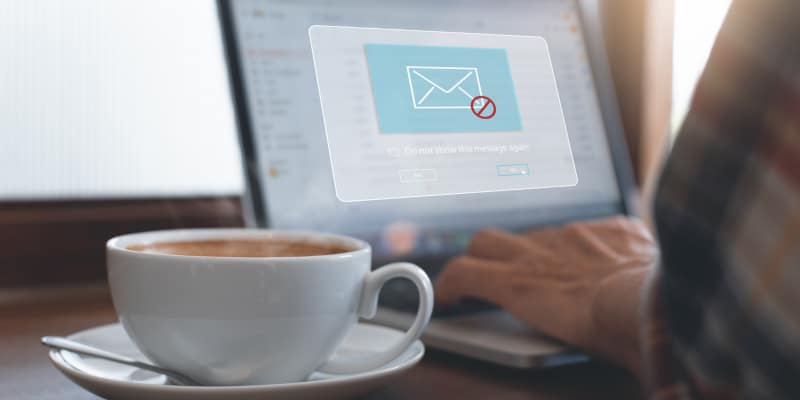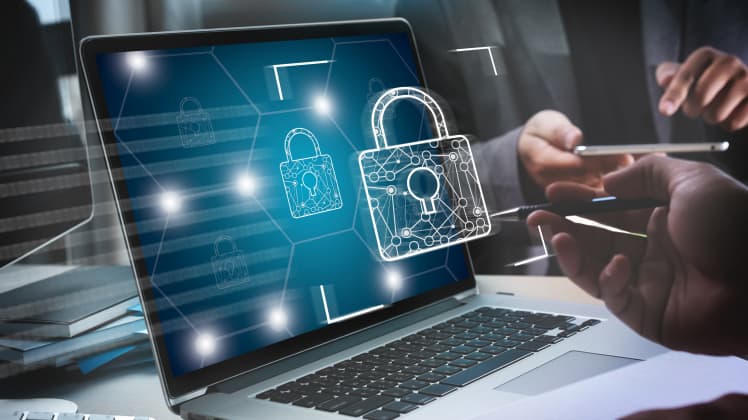In the world of digital communication channels, email is probably the oldest and probably the most vulnerable to cyberattacks. Official email IDs are often considered a prime target for malicious actors to launch attacks. To mitigate the risk of such attacks, it is vital to take proactive measures to safeguard your email against potential threats.
As the curtains fall on 2023, it is vital to equip yourself with the kind of email attacks that you may face in the forthcoming year. Our blog will help you leverage your email security measures and fortify your email communications.
Common Threats You May Encounter Via Email
Why are emails soft targets for cyber attacks? The reasons are obvious. This communication channel relies on the human element of trust. Despite all the security measures you deploy to protect your email network, there is a simple mistake of clicking on cleverly-masked suspicious links. A single click can devastate your workflows, finances, and eventually your reputation.
Cybercriminals are devising new and advanced email security threats every single day. Here are some of the most common email security threats that your business must be aware of:
1. Phishing
Phishing is one of the most common email tactics cybercriminals employ in the form of commercial emails and scam emails to derive sensitive customer or employee-related information such as:
- Credit card details.
- Log-in credentials
- Personal information
- Bank account details
In most cases, phishing emails come disguised as normal emails sent by a trusted source or person. Another apparent characteristic of phishing is that these attacks often target your entire workforce or a team.
How do cybercriminals launch a phishing attack? They use Artificial Intelligence and Machine Learning algorithms to evaluate extensive social media datasets and other publicly available data to create convincing emails tailored to particular recipients.
AI-enabled phishing campaigns can mimic the writing style of the recipient, include personal details, and use the recipient’s preferred communication channels. Such personalization can make it much more difficult for individuals to spot a phishing attempt, as the email appears to be from a legitimate source.
Phishing has been a rampant complaint in 2023. In fact, Verizon’s 2023 DBIR revealed that 36% of all data breaches stemmed from phishing.
Also Read: Critical Signs Your Business Needs Cybersecurity Managed Services
2. Malware
Malware is another cleverly disguised attack that encourages users to click on a seemingly innocent link. Once you click the link, you automatically download malicious malware such as digital worms, viruses, spyware, or Trojans. With malware taking on multiple avatars, the challenges for anti-malware software are skyrocketing.
As we head into 2023, there are two malware to be aware of:
- Zeus
- Cryptolocker
Experts warn that these are some of the most malicious malware that can completely siphon off your bank account. This malware has wreaked havoc across organizations, stealing millions of dollars and rendering many of them bankrupt.
3. Business Email Compromise or BEC
BEC attacks are spoofed emails that you may receive from a trusted source, such as your own employee, a long-standing vendor, or an organizational executive. The main content of these emails is a request for an urgent transfer of funds using manipulative social engineering tactics to pressure their victims into responding with urgency.
Between January and June 2023, there has been a 55% increase in BEC attacks targeting companies of all sizes. Identifying these emails is one way to protect your company from falling prey to BEC attacks. Look out for:
- Emails filled with grammatical errors.
- Repetitive emails targeting the same employee.
- Emails that come with a convincing backstory to enhance credibility.
4. Email spoofing
Email spoofing is a common technique used by cybercriminals to gain unauthorized access to sensitive information or to carry out malicious activities. In this technique, the attacker sends an email that appears to be from a trusted source to trick you into disclosing confidential data or performing harmful actions. Spoofed emails can also contain links or attachments that, when clicked or downloaded, can infect the recipient’s device with malware or ransomware.
5. Social engineering tactics
Social engineering is a type of cyber attack that often relies on psychological manipulation to deceive individuals into divulging sensitive information or performing actions that could compromise their security. Attackers may use a variety of tactics to masquerade as trusted entities to gain a victim’s trust and persuade them to click on malicious links.
6. Email spam
Spam refers to unwanted emails you receive in bulk. These spam emails often comprise advertised content to sell products or services. These seemingly innocent emails account for 45% of the emails, with 14.5 million being dispatched to innocent victims all around the globe.
Spam emails are never risk-free. Even with robust anti-spam software, these emails can worm into your inbox, occupy valuable server space, and cause network downtime.
Now that we’ve warned you about the six email security risks to protect your organization against in the forthcoming year, it is only fair that we also guide you on fortifying your email security.
10 Ways to Protect Your Email From Malicious Threats
- Create strong passwords. Use a password management tool to create the right one for your email ID.
- Never share your email password with anyone, and do not fail to change it periodically.
- Enable Multi-Factor Authentication (MFA) to add an extra layer of security for your email accounts. An MFA provides two gateways- a password and a code sent to your phone to provide access to your account.
- Create safe lists or manually filter out the spam. You can also resort to automatic filters and avoid overloading your inboxes with unwanted emails.
- Review and test your security measures to ensure effectiveness against the latest threats.
- Train your employees to identify suspicious emails and educate them about not clicking on links and downloading attachments from unknown sources.
- Create awareness about phishing attacks and how they work, and ensure your employees disable all links in phishing emails.
- Avoid disclosing sensitive information about your finances, work, or other details in suspicious links in your emails.
- Always use a network secured with WPA or WPA 2 encryption or a Windows VPN. Never use publicly available Wi-Fi.
- Always pay extra attention to the terms and conditions before agreeing to install or download software, even from trusted web sources.
Before concluding, we give you a heads-up about future email security trends in the forthcoming years. These pointers will help keep you informed and adequately equipped to address email security challenges.
Emerging Trends in Email Security for 2024 & Beyond
Here’s a quick glimpse into how email security will be in the future:
- API_based email security alternatives to integrate internal network for extensive threat intelligence and low-volume threat detection.
- AL and ML-powered algorithms and data analysis to detect and prevent email security threats.
- Email traffic pattern and user behavior analysis to identify potential threats on time.
- DLP or Data Loss Protection and endpoint security to prevent email-based security breaches.
- Consistent monitoring of email traffic and attachments to keep sensitive data within the organizational system.
Let’s Wrap Up
Never underestimate the need for email security. Every email ID is vulnerable to ransomware attacks and phishing scams. The more sophisticated these attacks become, the more you need to up the ante with your security measures.
Now’s the time to reach out to CMIT Solutions – one of the leading cybersecurity services providers in Roanoke. Invest in the best email security solutions and stay protected in the forthcoming years.




